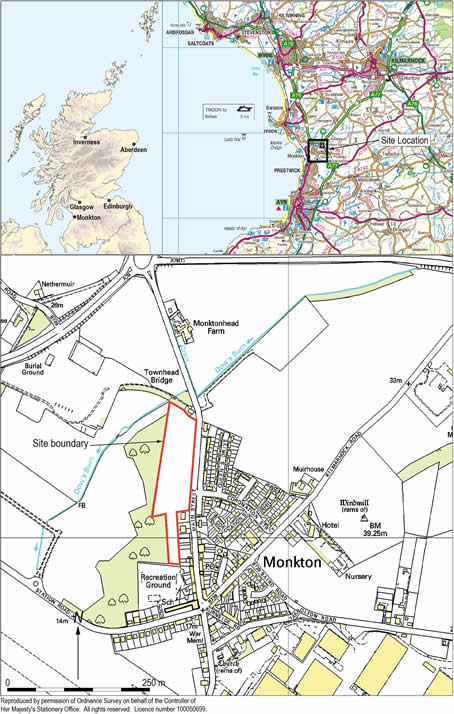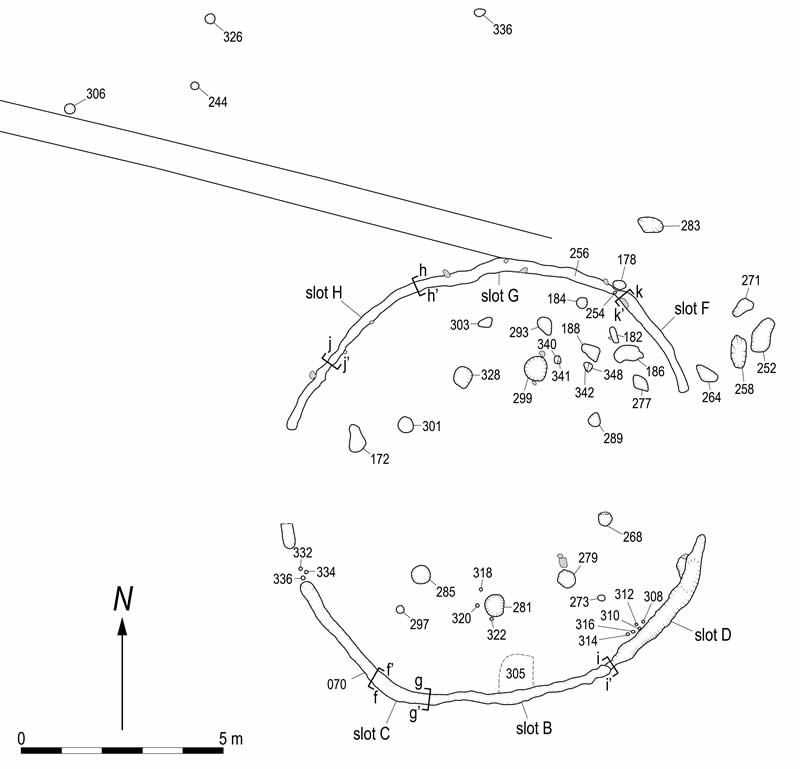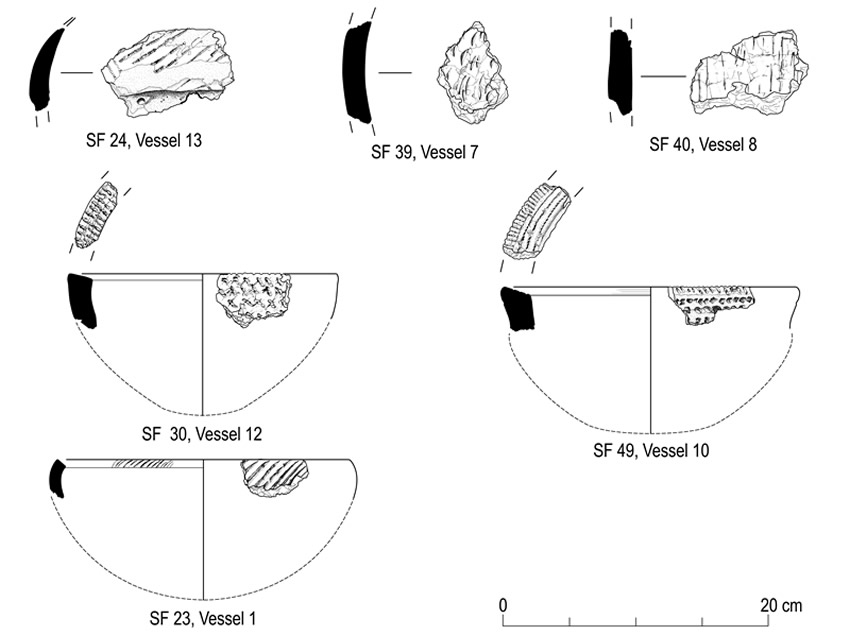Post-excavation analysis, led by Christine Rennie, of the results of a GUARD Archaeology excavation carried out in 2011 in advance of a housing development in Monkton in Ayrshire, has revealed evidence of intermittent human occupation of this landscape from the Mesolithic through the Neolithic, Bronze Age and Iron Age, right up into the medieval and post-medieval periods. The earliest identifiable activity on the site was an accumulation or deposit of charcoal-rich material that overlay a circular pit, dated to the seventh millennium BC, or the Mesolithic period. However, despite the number of pits and post-holes found across the site, no particular pattern or structures could be identified. Botanical analysis suggests that some Mesolithic occupation took place here, although the quantity of carbonised material indicates that the location was re-visited on more than one occasion.
Artefactual and botanical evidence for Neolithic activity is more apparent, with several excavated pits containing material dating from this period. Five of the pits were found to have been fire pits, indicating settlement of some form, however transitory. A range of pottery vessels, backed up by radiocarbon dates indicate occupation across this site from the middle of the fourth millennium BC into the late third millennium BC. For a small collection, the assemblage is unusual in containing sherds of various types of decorated pottery and more plain cooking pots from the same period. The range of vessels were dominated by Impressed Wares that are relatively rare for this region of Scotland, and uncommon when compared to other types of Neolithic pottery. The Monkton assemblage fills a gap in the South Ayrshire area and provides information on a range of different pots and decorative motifs. The Monkton Impressed Ware is significant because of the range of rim/collar and body sherds buried and recovered together from pits. The presence of well-formed and highly decorated rim/collars contrasts strikingly with the more sparsely decorated, and less well made body sherds from pots that were in all likelihood cooking vessels. That three pits had this combination of vessels is probably not coincidental, and the sherds could point the way to an understanding of the rituals and meaning associated with the activities in this area. There is a dichotomy between the presence of sherds that are extraordinary and those that are ordinary, those that are unusual and those that are mundane, possibly reflecting broad ritual and domestic activities.
Although the lithic assemblage recovered from Monkton is also numerically small, it adds to the general understanding of the region's later Neolithic settlement. Apart from two stray microlith-related pieces, a pitchstone microblade, and a small group of mainly quartz artefacts from the roundhouse and its surroundings, most finds date to the middle/late Neolithic period. The latter were all recovered from pits, or pit surroundings. These finds inform on later Neolithic lithic artefact forms and technology; the exchange of Yorkshire flint, which until now has been somewhat less common in south-west Scotland in comparison with the importation of flint from Antrim; and site activities. A scale-flaked/serrated piece relates to the processing of vegetable matter; a scraper may have been engaged in the processing of hides, although it cannot be ruled out that it was used to process harder materials, like wood, antler or bone; and two arrowheads relate to either hunting or warfare.
The only structure that could be identified was an Iron Age ring-groove roundhouse, one of several such known but unexcavated structures around Monkton. Botanical remains indicate that upright timbers and wattle-work woven between these supporting timbers formed the exterior wall of the roundhouse. Very little charcoal was found in the interior post-holes, making it unlikely that the structure was destroyed by fire, while the rotted remains of a wooden post found in one of the post-holes suggests that the site fell into disuse through abandonment. The roundhouse had been truncated by medieval and post-medieval cultivation furrows.
The site at Monkton is one of a small but increasing number of excavated sites situated on the raised beaches of the Ayrshire coast. Recent GUARD Archaeology excavations at the Curragh near Girvan also revealed a multi-phase site, with activity during the Neolithic, Bronze Age and early Iron Age. Further research into these multi-phase sites of Ayrshire, particularly the raised beach coastal sites, is required in order to better understand the patterns of settlement in this relatively neglected area of Scotland.
The full results of this research, which was funded by David Wilson Homes Ltd, ARO14: Pits, pots and pitchstone: excavation of a multi-phase site at Main Street, Monkton, has just been published and is now freely available to download from the ARO website - www.archaeologyreportsonline.com.



